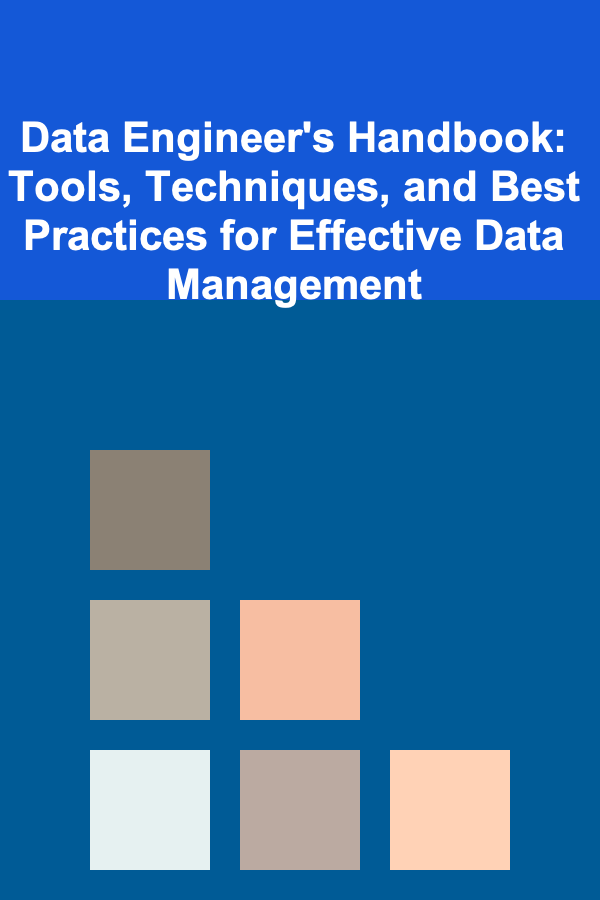
How to Create a Checklist for Community Engagement in Event Promotion
ebook include PDF & Audio bundle (Micro Guide)
$12.99$10.99
Limited Time Offer! Order within the next:

Community engagement is a critical aspect of event promotion, particularly for events that rely on word-of-mouth, social proof, and authentic connections. Whether you're hosting a conference, a product launch, a webinar, or a local event, the success of your event often hinges on how well you can connect with your community and engage them before, during, and after the event.
To help streamline the process, this actionable guide will walk you through creating an effective checklist for community engagement that can drive awareness, foster participation, and create lasting relationships. The goal is to ensure you're not just reaching your audience but also actively engaging them to build excitement, increase attendance, and enhance their overall experience.
Step 1: Define Your Community and Event Goals
Before diving into engagement tactics, it's essential to define your target community and event goals. These two elements will influence your entire engagement strategy.
Identify Your Community
A clear understanding of who makes up your community helps tailor your messaging and engagement efforts. Consider factors such as:
- Demographics: Age, location, industry, job titles, etc.
- Psychographics: Interests, challenges, and values.
- Behavior: Past event attendance, social media engagement, etc.
Having a concrete understanding of your community's composition allows you to engage with them more meaningfully.
Set Specific Event Goals
Your event goals will guide how you engage with your community. For example, if your goal is to increase ticket sales, your checklist will focus on creating excitement and urgency. If it's to build brand awareness, you may focus on content-driven engagement.
Step 2: Build Pre-Event Engagement Strategies
Effective engagement starts long before the event begins. Here's a checklist of actions to take during the pre-event phase.
1. Create Teaser Content
Teaser content builds anticipation and piques curiosity. This could include:
- Social media posts: Short, attention-grabbing posts with visuals, countdowns, or sneak peeks of event details.
- Email newsletters: Announcements with a preview of what's to come, such as key speakers, topics, or activities.
- Blog posts: Articles that highlight the benefits of attending, insights into what attendees can expect, or tips related to the event theme.
2. Leverage Community Influencers
Engaging with influencers or thought leaders within your community can amplify your event's reach. Identify key figures in your community who resonate with your audience and:
- Invite them to promote the event.
- Ask them to participate in pre-event activities like interviews, live Q&A sessions, or guest blog posts.
- Offer them an incentive, such as a free pass or exclusive access to event content.
3. Create a Referral Program
People love incentives. A referral program can encourage community members to spread the word about the event. Consider offering rewards such as:
- Discounted or free tickets.
- Exclusive access to event sessions.
- Branded merchandise.
Ensure the referral program is easy to understand and track.
4. Use Social Media Hashtags
Create a branded event hashtag that your community can use to talk about the event. Promote it across your social media channels and encourage attendees to use it when discussing the event. This creates a sense of belonging and excitement among participants.
5. Build a Community Group
Create an online community (e.g., a Facebook group or LinkedIn group) where attendees can interact with each other. This space can be used to:
- Discuss event details.
- Share relevant content and updates.
- Foster connections among like-minded individuals before the event.
The key is to make sure the group is active and that community members are encouraged to participate and interact.
Step 3: Engage During the Event
Event engagement doesn't stop once the doors open. Here's how you can keep your community involved throughout the event.
1. Use Interactive Technology
Interactive tools can significantly boost engagement during the event. Consider using:
- Live polls and Q&A: Platforms like Slido or Mentimeter allow you to engage attendees in real-time, asking questions or gauging their opinions during sessions.
- Live streaming: Streaming portions of the event can keep remote community members engaged and attract additional attendees.
- Event apps: Event apps can help attendees stay updated, interact with speakers, and network with each other.
2. Encourage Networking
Networking is often one of the most valuable aspects of any event. Facilitate networking by:
- Offering structured networking sessions (round tables, speed networking, etc.).
- Providing opportunities for attendees to meet based on common interests or goals.
- Ensuring that your event platform or app has networking features, like private chat rooms or match-making based on professional profiles.
3. Showcase User-Generated Content
Encourage attendees to share their experiences during the event through:
- Photos and videos with the event hashtag.
- Live tweets or status updates.
- Sharing thoughts or feedback in the event app.
User-generated content helps build a sense of community and creates social proof, which can inspire others to engage with your event in the future.
4. Real-Time Feedback
Don't wait until after the event to hear from your community. Collect feedback during the event through:
- Short surveys via mobile apps or kiosks.
- Asking for real-time comments or suggestions during live sessions.
- Engaging through social media polls or comment sections.
Listening to your community as the event unfolds helps you make immediate adjustments and shows your audience that you value their input.
Step 4: Post-Event Engagement Strategies
Once the event concludes, the engagement doesn't have to end. Following up with your community after the event is crucial for maintaining momentum and turning one-time attendees into long-term advocates.
1. Thank You Notes and Follow-Up Emails
Send personalized thank-you emails to all attendees. In your message:
- Thank them for their participation.
- Share event highlights or recorded sessions.
- Offer exclusive content or next steps, like a special offer or access to future events.
A thoughtful follow-up shows your audience that you appreciate their involvement and gives them a reason to stay engaged with your brand.
2. Share Post-Event Content
Content sharing after the event can help keep the buzz alive. Consider sharing:
- Key takeaways from sessions.
- Recorded videos or webinars for those who missed the event.
- Speaker slides or presentation materials.
This also gives attendees an opportunity to revisit important content and continue learning.
3. Create an Event Recap
A well-crafted event recap, whether in the form of a blog post, video, or infographic, can keep the momentum going by summarizing the highlights of the event. This is also a great piece of content to share across social media, your website, and via email.
4. Nurture Leads and Build Relationships
For B2B events, your post-event checklist should focus on nurturing leads. This can include:
- Reaching out to those who showed interest but didn't attend.
- Following up with potential clients or partners who interacted with your event content.
- Offering additional resources that might help them move further down the sales funnel.
This stage is about continuing the conversation and building lasting relationships with your community.
Step 5: Analyze and Measure Engagement
To improve future community engagement efforts, it's crucial to assess the success of your strategies. Here are some key metrics to track:
- Attendance rate: Did the community show up in the numbers you expected?
- Engagement rate: How actively did attendees interact with content (social media posts, Q&A sessions, etc.)?
- Content reach: How many people were exposed to event-related content?
- Lead generation: Did your engagement efforts result in valuable leads or partnerships?
- Audience feedback: What did attendees say about the event, and how can you improve for next time?
Analyzing these metrics will give you insights into what worked and where you can enhance your community engagement strategy for future events.
Conclusion
Creating a checklist for community engagement in event promotion is a critical step in ensuring the success of your event. By building meaningful relationships with your community, offering value at every touchpoint, and analyzing the results of your efforts, you can create an event experience that not only drives attendance but also strengthens the bond between your brand and your audience.
Remember, community engagement is an ongoing process that requires consistent effort before, during, and after the event. By using this checklist, you'll be well-equipped to foster lasting engagement that extends beyond the event itself.

Data Engineer's Handbook: Tools, Techniques, and Best Practices for Effective Data Management
Read More
How to Choose Multi-Functional Furniture for Toy Storage
Read More
How to Manage Your Finances While Traveling
Read More
How to Organize Your Fridge for Food Safety and Freshness
Read More
How to Upgrade Your Home's Lighting for a More Modern Look
Read More
How to Use Apps to Manage Home Projects Efficiently
Read MoreOther Products

Data Engineer's Handbook: Tools, Techniques, and Best Practices for Effective Data Management
Read More
How to Choose Multi-Functional Furniture for Toy Storage
Read More
How to Manage Your Finances While Traveling
Read More
How to Organize Your Fridge for Food Safety and Freshness
Read More
How to Upgrade Your Home's Lighting for a More Modern Look
Read More